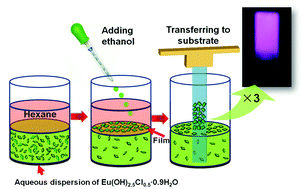Pyroelectric nanogenerator charges Li-ion battery with harvested energy
Advertisement
The idea of harvesting ambient energy from the environment that would otherwise not be purposefully used is, in theory, a great way to produce green, renewable energy. But the biggest problem in this fairly new area of research is that scientists have yet to find a method that can harvest very large amounts of energy. However, the technology is steadily improving, as demonstrated by the development of a nanogenerator that can partially charge a Li-ion battery by harvesting energy from temperature fluctuations in the environment.
The scientists, Ya Yang and Sihong Wang from the Georgia Institute of Technology in Atlanta, Yan Zhang from the Georgia Institute of Technology and the Chinese Academy of Sciences in Beijing, and Zhong Lin Wang from both institutions, have published a paper on a pyroelectric nanogenerator in a recent issue of Nano Letters. The scientists call the device a pyroelectric nanogenerator (PENG) because it's based on the pyroelectric effect, in which an anisotropic material's polarization changes in response to temperature fluctuations, which can be used to harvest thermal energy. Unlike the Seebeck effect, which is used to harvest thermal energy based on the temperature difference between two ends of a device, the pyroelectric effect occurs in environments where the temperature is spatially uniform but changes over time. "Wasted heat is a rich source of energy that can be harvested," Zhong Lin Wang told Phys.org.
"In 2010, for example, more than 50 percent of the energy generated from all sources in the US was lost mainly in the form of wasted heat, which presents us with a great opportunity to harvest this type of energy using nanotechnology. Harvesting thermoelectric energy mainly relies on the Seebeck effect, which utilizes a temperature difference between two ends of the device for driving the diffusion of charge carriers. The presence of a temperature gradient is a must for the conventional thermoelectric cell. However, in an environment where the temperature is spatially uniform without a gradient, such as the outdoors in our daily life, the Seebeck effect is hardly useful for harvesting thermal energy arising from a time-dependent temperature fluctuation. In this case, the pyroelectric effect is the choice, which is about the spontaneous polarization in certain anisotropic solids as a result of temperature fluctuation, but there are few studies about using the pyroelectric effect for harvesting thermal energy."
To date, PENGs have had output voltages below 0.1 V and current below 1 nA, which are too low to drive any commercial electronics. Here, the researchers demonstrated that a PENG made of a lead zirconate titanate (PZT) thin film has an output voltage of up to 22 V, a current peak of 430 nA, and a current density of 171 nA/cm2 when exposed to a temperature change of 45 K at a rate of 0.2 K/second. The PZT thin film is 21 mm long, 12 mm wide, and 175 μm thick – about half the size of a postage stamp. With these improvements in voltage and current, a single output pulse of the PENG could continuously power an LCD for longer than 60 seconds; in comparison, a piezoelectric nanogenerator, which harvests mechanical energy from the environment, can power an LCD for about 2 seconds.
To expand the potential applications of the PENG, the researchers wanted to store the electric energy it generated from temperature fluctuations. So they hooked it up to a Li-ion coin battery, and demonstrated that the PENG could charge the battery from 650 to 810 mV in about 3 hours. They then showed that this stored electric capacity could be used to power a green LED for a few seconds. Another potential application of PENGs is wireless sensors. The researchers explained that wireless sensors can be powered by a rechargeable Li-ion battery with a voltage of 2.8 V. However, the PENG fabricated here has too small of a current to do this, since the current cannot completely overtake the battery's inherent self-discharge. The researchers predict that doubling the area of the PZT film would double the current, and increasing the thickness of the PZT film could also increase the current. These improvements could make the pyroelectric nanogenerators attractive for driving wireless sensors, LCDs, and other small electronic devices, just by harvesting the temperature changes in the environment. "In our living environment, temperature change can come from an air-flow-induced drop in room temperature, the cycled heat generation near an engine, sunlight illumination with a moving shadow, on and off hot water/air flow in a pipe, etc." Zhong Lin Wang said. Currently, the researchers are continuing to improve the PENG's output power and are also integrating the technology with some existing products to demonstrate its practical applications.
Original publication
Other news from the department science
These products might interest you
Most read news
More news from our other portals
See the theme worlds for related content
Topic world Sensor technology
Sensor technology has revolutionized the chemical industry by providing accurate, timely and reliable data across a wide range of processes. From monitoring critical parameters in production lines to early detection of potential malfunctions or hazards, sensors are the silent sentinels that ensure quality, efficiency and safety.

Topic world Sensor technology
Sensor technology has revolutionized the chemical industry by providing accurate, timely and reliable data across a wide range of processes. From monitoring critical parameters in production lines to early detection of potential malfunctions or hazards, sensors are the silent sentinels that ensure quality, efficiency and safety.



































































